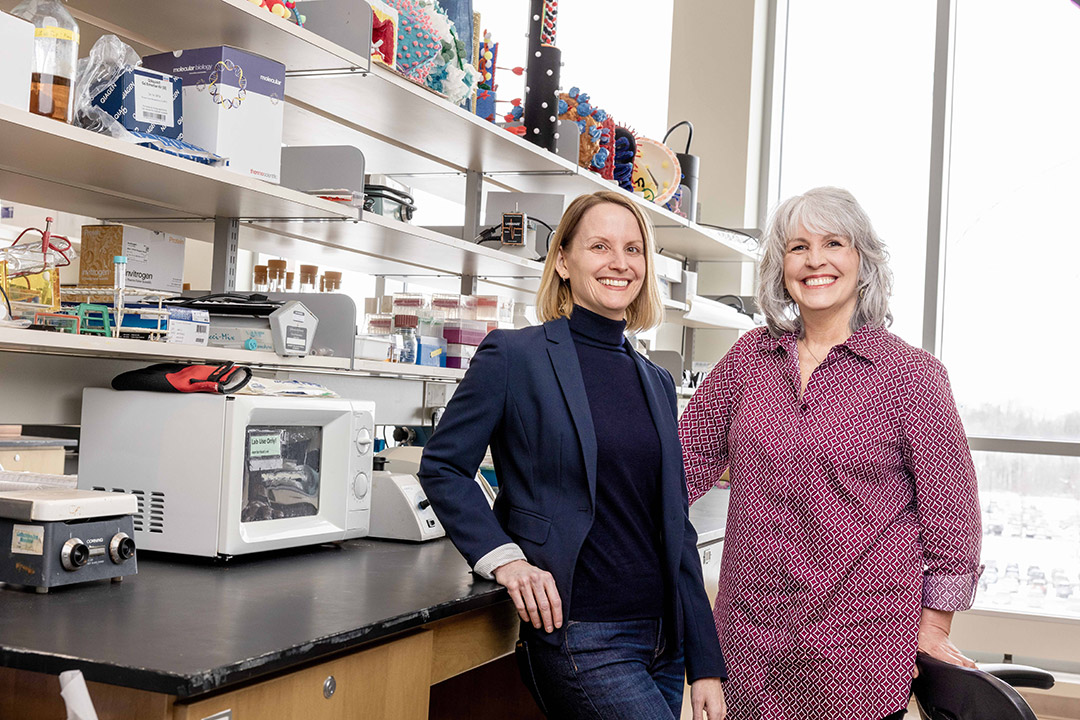New work brings together an under-studied area of mechanical signals on cells and their influence on viral infections

Scott Hamilton/RIT
Professors Karin Wuertz-Kozak, left, and Maureen Ferran will be working on a new research project to explore how mechanical forces influence viral infection rates in the lungs to reduce disease progression.
Researchers at Rochester Institute of Technology are investigating how mechanical forces—such as stretching and changes in tissue stiffness—influence viral infection rates in the lungs to understand how disease progression can be reduced.
The process combines virology and mechanobiology, two distinct areas of study that had not been explored at the same time but might prove to be a way to better understand disease progressions to intervene earlier and improve patient outcomes.
RIT professors Karin Wuertz-Kozak, a bioengineer, and Maureen Ferran, a virologist, are investigating the relationship between mechanical forces, such as changes in stiffness or stretching, and viral pathogenesis in lung tissue through a National Science Foundation grant they recently received.
Understanding how cells respond to mechanical signals could help in understanding disease progression and eventually be a way to develop new therapies and interventions, including repair and regeneration of damaged tissues, said Wuertz-Kozak.
“The concept of mechano-biology is about trying to understand how mechanical signals change the behavior of a cell,” she said. “Typically, someone studying mechanical forces like stretching or stiffness would not be the same person studying virus progression, and vice versa. This project allows us to merge both perspectives.”
The team will investigate how viruses infect lung fibroblasts under different mechanical loading conditions, and how differences in the mechanical environment may alter cellular pathways that influence viral performance. In the lungs, the predominant mechanical cues include breathing-related stretching and stiffness-changes associated with diseases such as lung fibrosis. An indicator of this condition is abnormal tissue rigidity.
Ferran, a professor in RIT’s Thomas H. Gosnell School of Life Sciences, is an expert in genetics and immune response. She leads the Viral Genetics Lab where research focuses on using viruses as tools for cancer therapy, probing the immune response, and studying age-related diseases.
“Our findings may ultimately help guide physicians when advising patients on exercise during a viral infection,” said Ferran. “Exercise leads to increased breathing frequency and increased mechanical forces on lung tissue. By understanding how these forces affect infection progression of lung cells, we can recommend strategies that minimize complications and potentially improve recovery.”
Wuertz-Kozak, an expert in cellular micro-environments and tissue engineering, leads the Tissue Regeneration and Mechanobiology Lab in RIT’s Kate Gleason College of Engineering. Through the lab, her team is developing treatment options for tissue regeneration and pain reduction.









